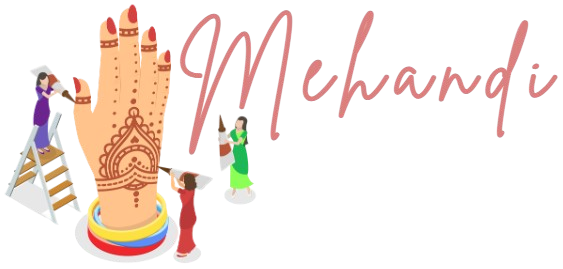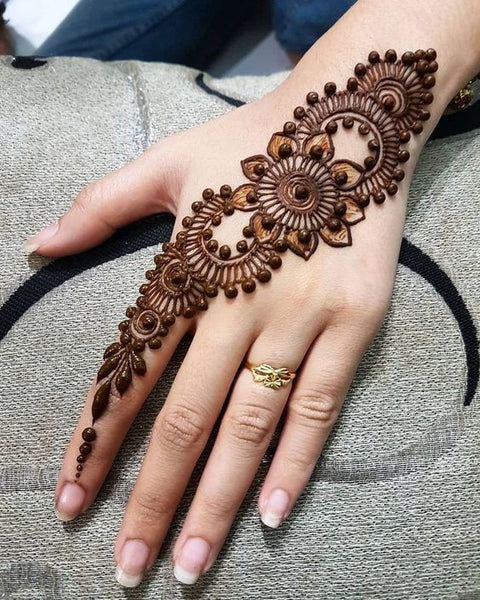Introduction
An ancient kind of body painting, mehandi design simple—also known as henna—has been done for millennia in many different civilizations. Especially during holidays like weddings and celebrations, this natural dye—derived from the leaves of the henna plant (Lawsonia inermis)—is extensively used for adorning hands and feet. Mehendi is a custom with great historical, cultural, and even medicinal roots. The history, meaning, methods of application, advantages, and several forms of basic mehendi designs will be discussed in this page.
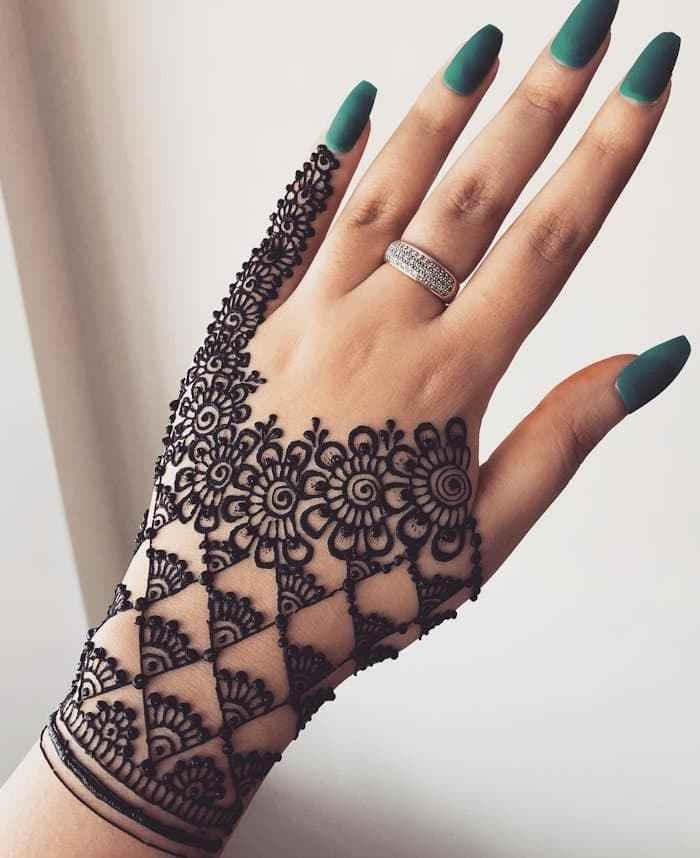
Originating in ancient Egypt, India, and the Middle East, mehandi design simple has a more than 5000 year history. Cleopatra reportedly wore henna on her body because of its cooling and beauty effects. Mehendi is quite important in India both religiously and culturally. Mehendi, which stands for love, wealth, and good fortune, is always a mainstay of wedding ceremonies.
mehandi design simple designs throughout many civilizations have changed with time. Among the most historically noteworthy mehendi designs are those like:
1. Ancient Indian Mehendi: Often encompassing the whole hand and feet, ancient Indian Mehendi has complex floral and paisley designs.
2. Egyptian Mehendi: Used by pharaohs and queens, Egyptian Mehendi combines geometric forms and symbolic motifs.
3. Arabic Mehendi: Often containing floral themes, Arabic Mehendi is renowned for its strong, flowing designs with notable space.
4. African Mehendi: Reflecting cultural legacy, Africanmehandi design simple comprises linear designs and tribal patterns.
5. Bridal Mehendi: The most complex, usually containing personal components like initials, photos, or holy symbols, is bridal mehendi.
Simple Mehendi Illustration
Simple mehandi design simple designs are becoming more and more popular for those who want simple but exquisite patterns, even if traditional mehendi designs are complex and detailed. Here are few typical simple mehendi designs:
Floral designs
simple mehandi design patterns feature among the most often occurring elements: flowers. They look great on the hands and feet and are simple to sketch.
Leedy Vines
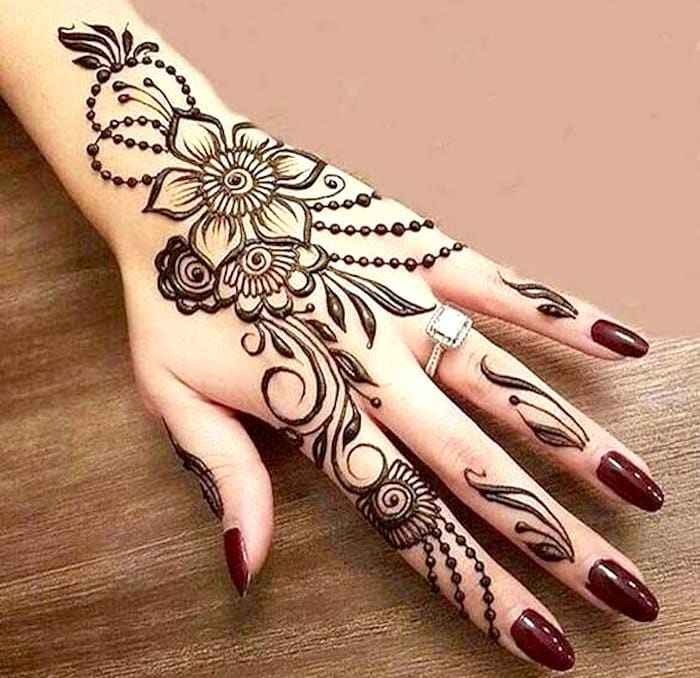
Perfect for both informal and festive events, delicate leaf designs produce a natural and elegant appeal.
Mantala Designs

Simple yet artistic are circular mandala designs. Usually beginning in the middle of the palm, they spread outward.
Designs for Finger Mehendi

Designing simply the fingers with small flower and dot designs is a terrific choice for individuals who like simple patterns.
Mehendi Bracing and Ring Style
These designs are like jewelry; rings on the fingers and mehendi forms bracelets around the wrist.
Arabic Standard Mehendi
Usually vibrant and free-flowing with floral and paisley patterns that call minimal intricacy, Arabic mehendi designs are easy to apply.
Simple Mehendi
Modern and fashionable look is created by simple dots, lines, and geometric designs.
History and Significance of Mehndi
The practice of applying mehndi dates back thousands of years. It was initially used for cooling the body in hot climates but later evolved into a decorative and symbolic art form. Mehndi is applied during festivals like Diwali, Eid, and Karva Chauth and plays a significant role in weddings. Brides wear elaborate mehndi patterns, as it is believed to bring prosperity and good fortune.
Mehendi Application: Detailed Guide Step-by-Step
Applying mehendi calls both talent and time to produce complex and lovely designs. This is a detailed guide on applying mehendi correctly:
Getting ready the henney paste
To create a smooth paste, grind dry henna leaves into a fine powder then mix with water, lemon juice, essential oils like eucalyptus.
For best dye release, the paste is let rest several hours or overnight.
Getting the Skin Ready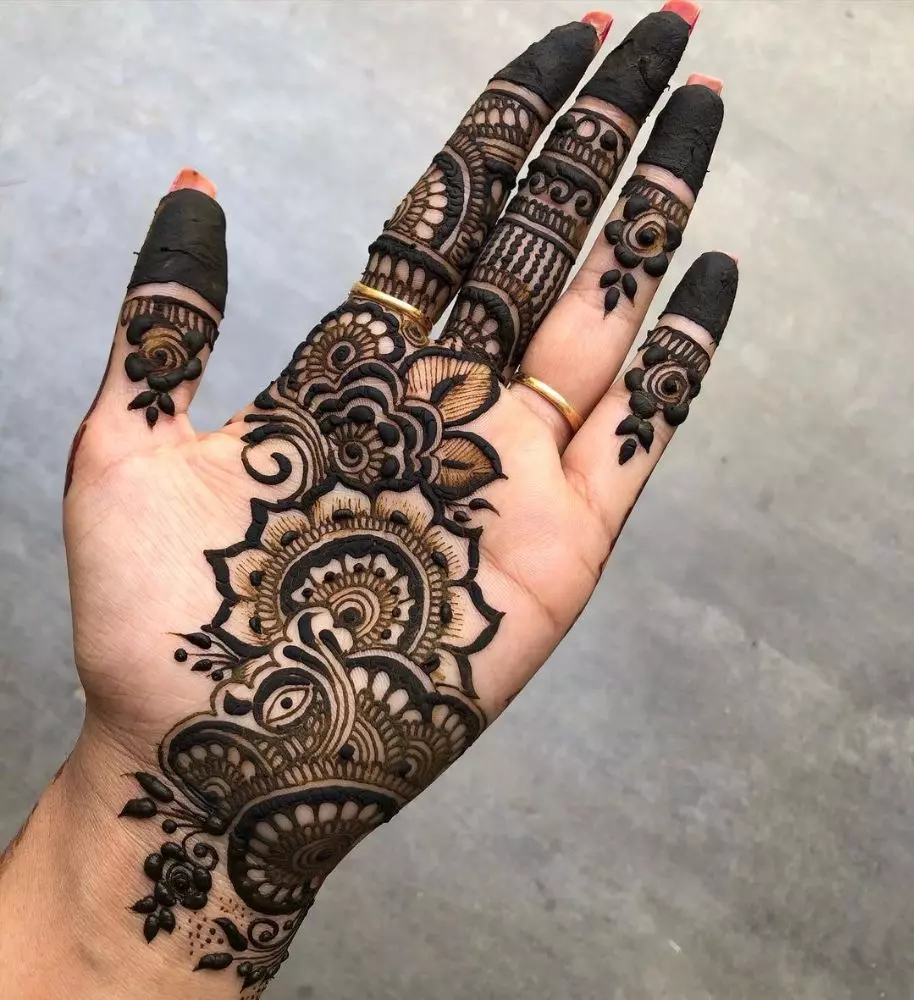
Thorough washing of hands and feet can help to eliminate any dirt or grease.
Better dye absorption can result from a little eucalyptus oil application.
Applying the mehendi
Simple designs are created on the skin with a cone, brush, or stick.
To obtain a darker stain, let the paste cure naturally for 4–6 hours.
Following up
The mehendi is carefully scraped off once dried—without using water.
To get the stain stronger, one occasionally uses a mixture of lemon juice and sugar.
For best effects, avoid cleaning the area for least twelve hours.
Advantages of mehendi
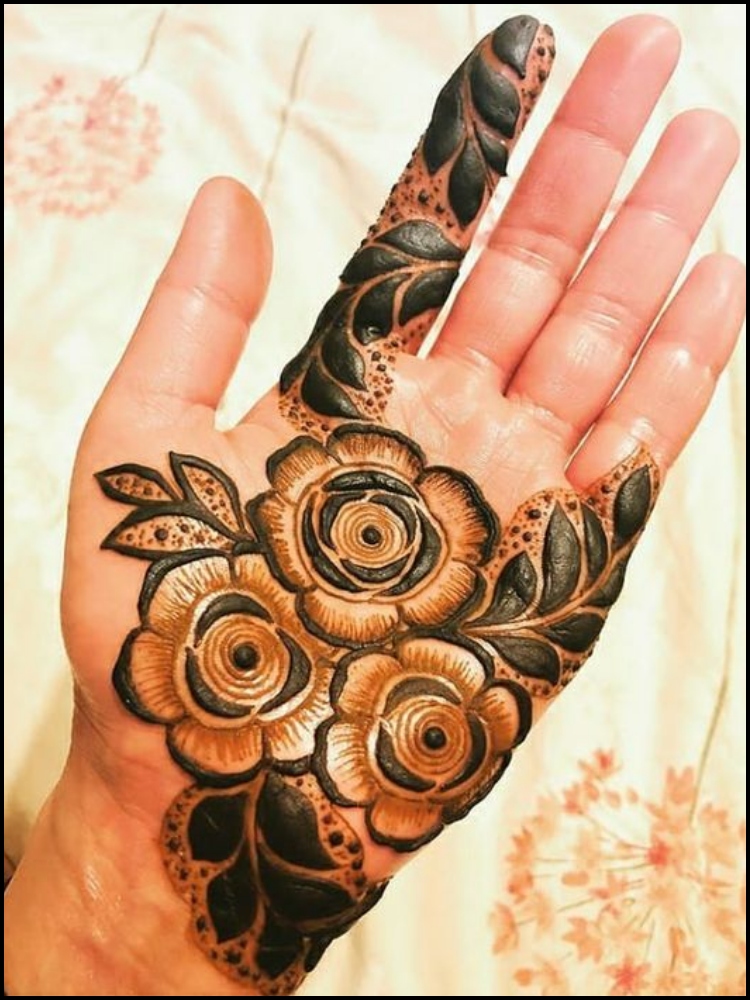
Mehendi offers various health advantages beyond only cosmetic value.
1. Cooling Effect: Drops body temperature and releases heat from.
2. Medicinal Uses: Ayurveda uses it to treat skin disorders since it is known for its antifungal and antibacterial qualities.
3. Hair Care: Acts as a natural conditioner, thickens hair, and helps to avoid dandruff.
4. Stress Relief: simple mehandi design’s scent is thought to provide soothing properties for stress.
Natural Darkening Mehendi Color: Techniques

Here are some naturally occurring suggestions for a deep, black stain:
Leave the mehendi paste on for minimum six to eight hours.
Over the artwork, brush on a lemon-sugar mixture.
Keep hands warm; heat improves color development.
For at least 24 hours following application, avoid water.
Tips for Better Mehndi Application
- Always apply mehndi on clean, dry skin.
- Practice basic patterns on paper before applying on hands.
- Start with simple designs and gradually move to complex patterns.
- Use high-quality henna for a rich, dark stain.
Mehendi in Contemporary Designs
simple mehandi design has developed outside conventional uses in line with changing times. Popular have been temporary glitter mehendi, white henna, and colorful mehendi. Many modern brides want simple or customized designs using initials and unique symbols.
Conclusion
simple mehandi design is a sign of history, beauty, and custom rather than only a decorative art medium. Mehendi is still very dear in people’s life whether it’s for therapeutic needs, body art, or celebration. Mehendi, with its ageless appeal, is still a beloved ritual worldwide that links generations by means of its creative and symbolic representations.
